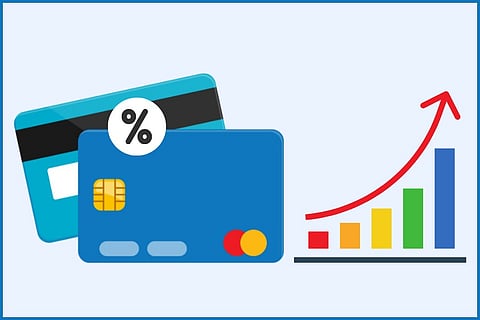

A credit card offers a world of convenience. From spontaneous gifts to last-minute travel plans, you can make instant transactions and settle the payment later. It can be a real lifesaver during tight financial times as well. However, with all this convenience comes something to watch out for – credit card interest. The interest amount you pay could be a lot or nothing at all, based entirely on how you handle your card.
Keep reading to learn more about credit card interest and tips to manage it.
Credit card interest rates are the price you pay for the convenience of borrowing funds and paying later. The interest rates are typically stated on an annual basis and expressed as the Annual Percentage Rate (APR).
Note that interest charges are applicable only when you don’t pay your outstanding in full and carry a balance on your credit card to the next billing cycle. Moreover, using a credit card to withdraw cash incurs immediate interest charges, and the rate is often higher than that of regular transactions.
The general formula to calculate the interest is as follows:
Credit card interest = (Number of days counted from the transaction date x outstanding amount x Interest rate per month x 12 months) / 365.
This rate represents the annual interest, not the monthly calculation. To calculate the interest for the monthly dues, banks usually apply the monthly percentage rate or MPR. The formula for MPR is:
APR/Number of billing cycles per year
For example, if the APR is around 24-36% per annum, then the interest rate per month usually comes around 2-3%.
Rather than making manual calculations, it is wise to use an online credit card interest calculator available on bank websites. With basic financial details, the tool will display how much the total interest charges would be for the month and the overall amount due.
The grace period is the time between the end of your billing cycle and the payment due date. This interest-free period typically ranges from 20 to 25 days or more, depending on the bank and your creditworthiness. During this period, no interest is charged on new purchases if the previous month's balance was paid in full.
Remember that an interest-free period on credit card outstanding amount does not mean a 0% APR forever. They usually stay interest-free for a limited time and once the promotional period ends, the card will revert to its standard APR. However, there are a few tips (discussed below) that you can use to reduce the interest you incur on your card.
Your first step should be to apply for the right credit card such as the IndusInd Bank Platinum RuPay Credit Card. Besides competitive interest rates and a generous grace period, you get useful benefits such as:
● Quick UPI payments via credit card
● High reward points on both UPI and non-UPI transactions
● Fuel surcharge waiver
● 0 joining fee and annual fees
Don’t delay and apply for a credit card online with IndusInd Bank's 100% paperless process!
Credit cards, when used responsibly, can be a useful asset in your financial toolkit, offering convenience and rewards. However, interest rates are to be kept in mind as they can quickly turn into a heavy burden for those carrying ongoing balances.
By following practices such as punctual payments, leveraging grace periods, and selecting the right card, you can minimise or even eliminate interest charges. This way, your credit card becomes a tool that helps you achieve financial flexibility and not something that traps you in debt.
